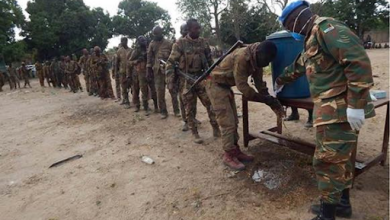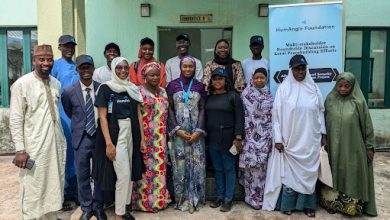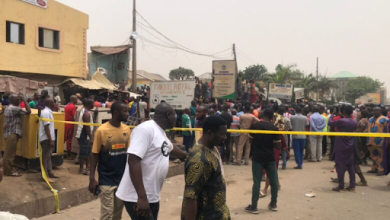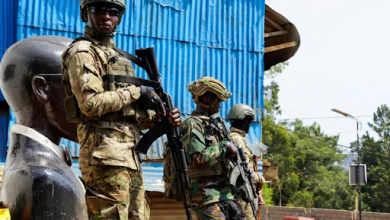Factcheck: Picture Resurfaces Of ‘Made-In-Russia IPOB Rocket’; Still Not True
The picture of the ballistic missile dates back to 2012 and was taken in Cuba, a country in the northern Caribbean region.
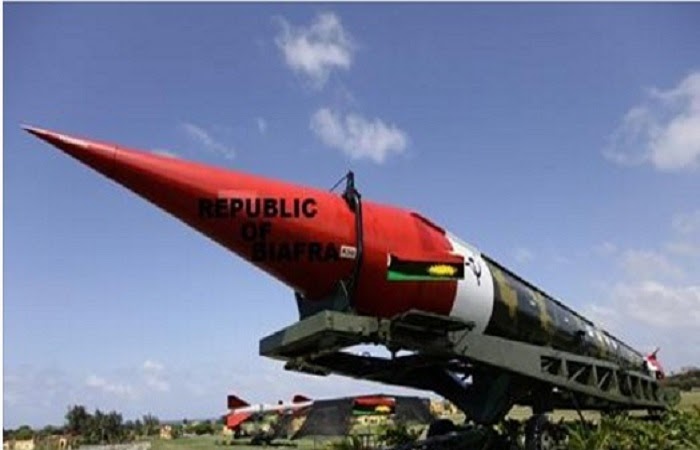
Last week, Nigerian Twitter user Kingsley Uba Dike (@uba_dike) shared a set of screenshots claiming that a Biafran secessionist previously based in Russia had built a nuclear missile, which he called “Biafra Satan 404.” This is not true.
“Zoo Nigeria don’t know how ready we are,” Dike wrote in the caption of the tweet, which he shared with over 14,300 followers on Thursday, June 17.
As of Monday morning, June 21, 2021, the post had been liked by 300 users of the microblogging platform and shared at least 318 times.

It is not the first time this claim about the Indigenous People of Biafra (IPOB) would be made. The report whose screenshots were shared by Dike was originally published by Oriental Times on Aug. 17, 2017.
The news platform, which later described the claim as “bogus,” reported that the Biafra Satan 404 was “capable of annihilating a total of ten Nigerian states.”
“The new weapon can deploy warheads of 40 megatons, or about 2,000 times as powerful as the bombs dropped on Hiroshima and Nagaski in 1945,” its source, a post published by Facebook page Radio Biafra, had noted.
Radio Biafra described the weapon as the RS-28 Sarmat missile, “better known as the Satan 404 nuclear missile.”
The words “Republic of Biafra” were awkwardly superimposed on the rocket’s nose cone in the attached picture, pointing out that the original image had been edited. The flag of Biafra, a secessionist state that briefly separated from Nigeria between 1967 and 1970, was similarly pasted on the picture.
The claim has been republished over the years by various blog sites, including Africa Status, How NG, Igbere TV, and many others.
Meanwhile, in a fact-check published in 2017, Legit NG traced the picture of the rocket to a 2013 article published by HuffPost.
Further search conducted by HumAngle revealed that the picture first appeared online when it was published by Reuters on Oct. 16, 2012. It is part of a gallery titled ‘Relics of the Cuban Missile Crisis.’
In the caption, Reuters noted that the picture was taken by Desmond Boylan on Oct. 15, 2012, and that it showed “a deactivated Soviet-era SS-4 medium-range nuclear-capable ballistic missile” displayed at La Cabana fortress in Havana, Cuba.
This conflicts with the statement from Biafra Radio that claimed it to be an RS-28 Sarmat missile. Also, the missiles known as Satan are the Russian R-36, a family of intercontinental ballistic missiles.
The 50th anniversary of the Cuban missile scare was marked in 2012, inspiring the publication of various articles about the event, including the Reuters photo story. The 1962 crisis was a confrontation between the Soviet Union and the United States that nearly blew into a nuclear war.
Misleading claims about IPOB’s military capabilities are not new. Earlier this year, pictures of guns manufactured in the United States circulated on Facebook, with users of the platform suggesting that they were produced by the secessionist group’s militant arm, the Eastern Security Network (ESN).
There have, however, been indications that the group is investing in the production of armed rocket artillery.
Support Our Journalism
There are millions of ordinary people affected by conflict in Africa whose stories are missing in the mainstream media. HumAngle is determined to tell those challenging and under-reported stories, hoping that the people impacted by these conflicts will find the safety and security they deserve.
To ensure that we continue to provide public service coverage, we have a small favour to ask you. We want you to be part of our journalistic endeavour by contributing a token to us.
Your donation will further promote a robust, free, and independent media.
Donate HereStay Closer To The Stories That Matter

